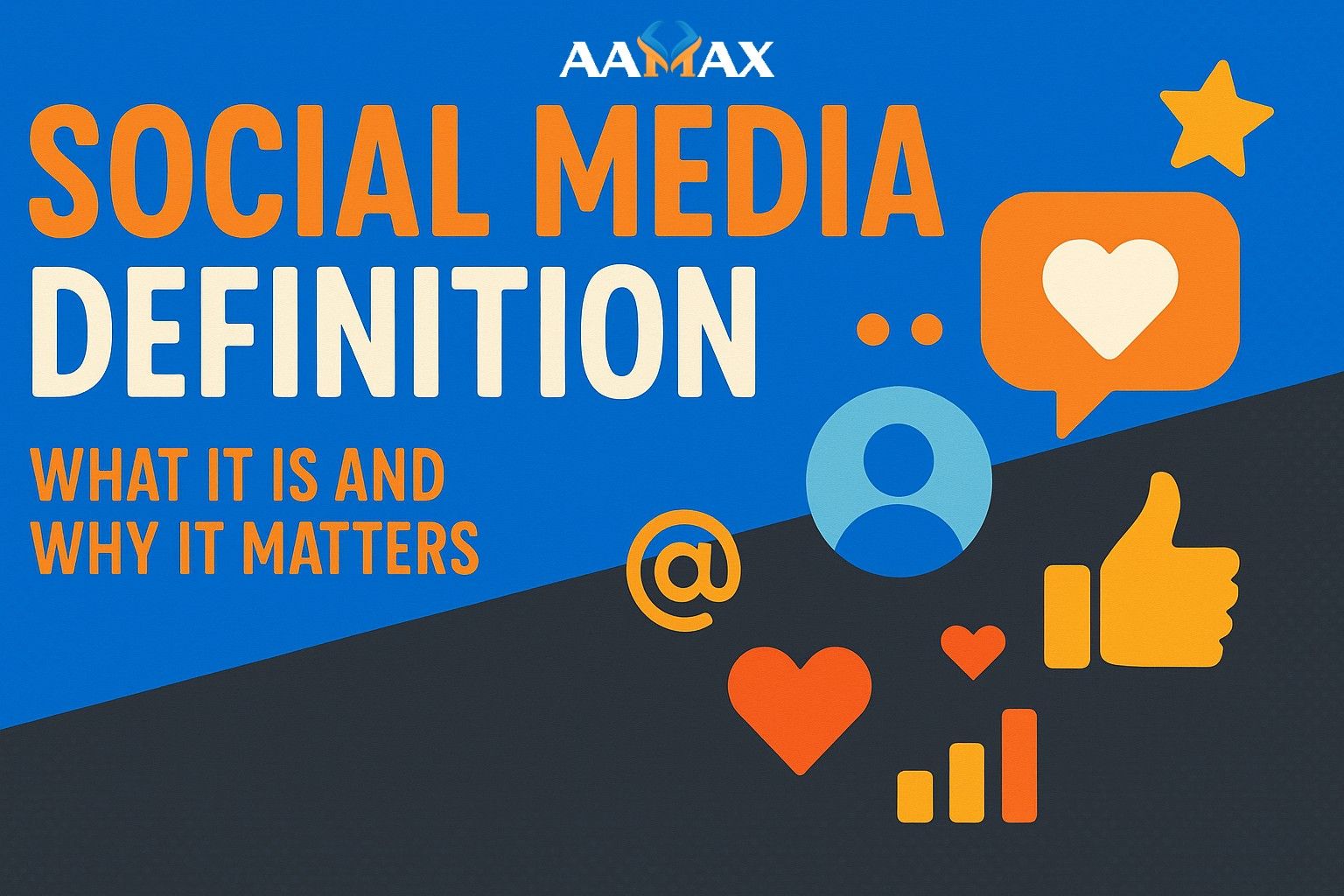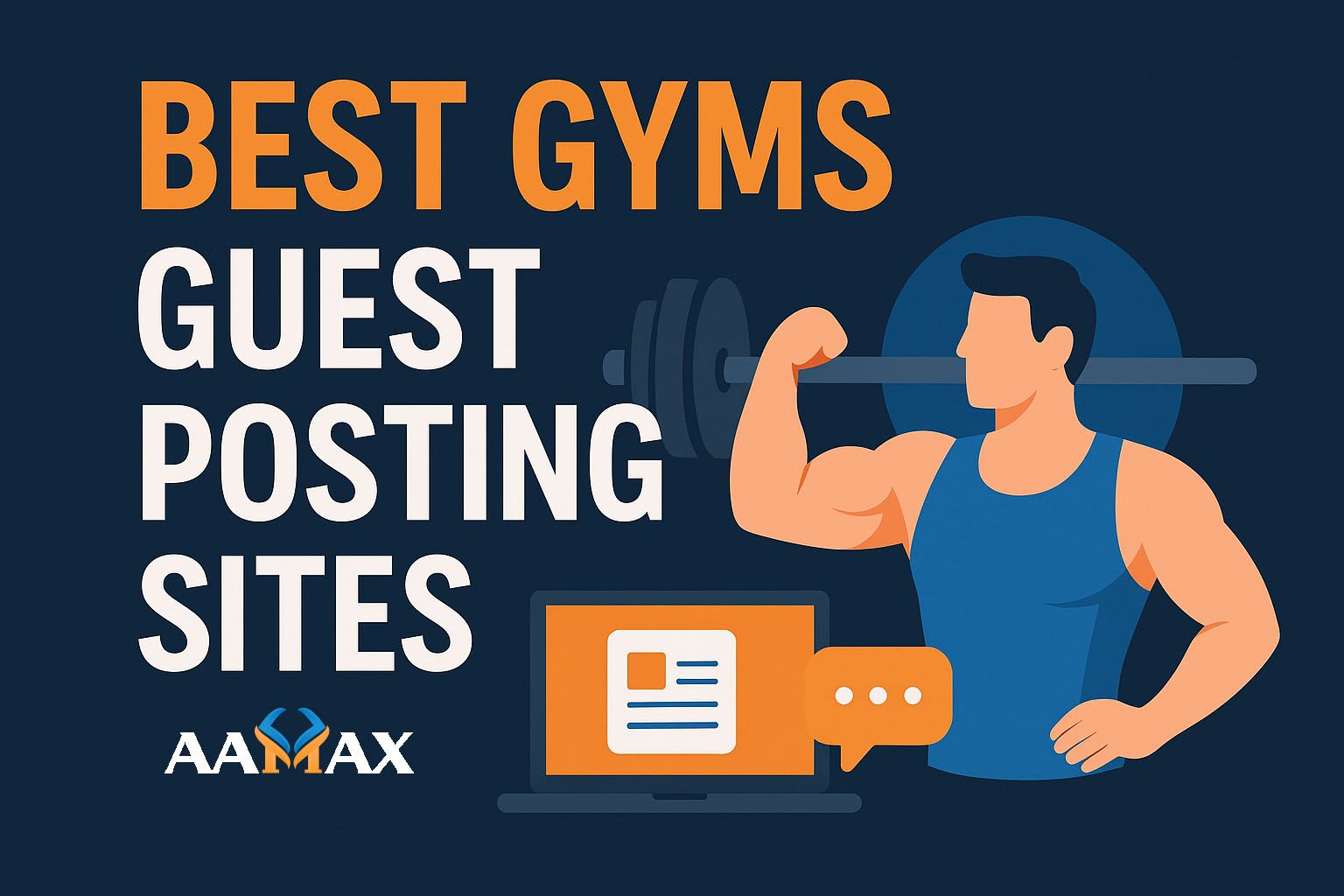
Social Media Definition: What It Is and Why It Matters
Social media has become a central part of our personal lives, business strategies, and global communication. From casual conversations to breaking news, brand marketing to customer support, social media platforms have transformed how we connect and communicate.
But what exactly is Digital Marketing Is it simply a collection of apps for sharing selfies and memes, or is there a deeper, more strategic importance behind these platforms?
In this in-depth guide, we’ll explore the definition of social media, its types, key features, evolution, and—most importantly—why it matters for individuals, brands, and society.
Hire AAMAX For Website Development and Digital Marketing Services
What Is Social Media?
Definition
Social media refers to digital platforms and technologies that enable users to create, share, and interact with content and other users in real time. These platforms are designed to foster online communities where people can engage in conversations, share media, express opinions, and collaborate.
At its core, social media is powered by user-generated content and networked communication. Unlike traditional media, which flows in one direction from publishers to audiences, social media creates two-way communication, allowing anyone to be both a consumer and creator.
Examples of Popular Social Media Platforms
- Facebook – Community and personal connections
- Instagram – Visual storytelling through images and videos
- Twitter (X) – Microblogging and real-time news
- LinkedIn – Professional networking
- TikTok – Short-form video content
- YouTube – Video publishing and streaming
- Snapchat – Time-sensitive, casual sharing
- Pinterest – Visual inspiration and ideas
Key Characteristics of Social Media
Understanding what makes social media unique helps clarify its role and impact. Here are the core features:
1. User-Generated Content
Social media thrives on content created by its users—photos, videos, comments, reviews, and stories.
2. Interactivity
Users can like, share, comment, reply, and message others. This interactivity builds conversations and engagement.
3. Real-Time Communication
Social media allows for immediate updates, breaking news, and live content, fostering real-time participation.
4. Community and Networking
Users can join groups, follow pages, and build networks around shared interests, professions, or causes.
5. Personalization and Algorithms
Content is tailored based on user behavior, preferences, and interests using complex algorithms.
6. Multi-Media Capabilities
Most platforms support images, video, audio, live streams, GIFs, polls, and more—making content creation highly flexible.
The Evolution of Social Media
1. The Early Days
The earliest forms of social media included chat rooms, forums, and bulletin boards like Usenet and AOL Instant Messenger. They laid the foundation for today’s platforms by enabling digital communication.
2. Rise of Mainstream Platforms
The early 2000s saw the launch of platforms like Friendster, MySpace, and ultimately Facebook in 2004, which revolutionized how people connected online.
3. Expansion and Diversification
Social media rapidly evolved with platforms catering to specific interests:
- LinkedIn for professionals
- Instagram for visual content
- YouTube for video creators
- TikTok for short-form entertainment
4. Mobile and Global Reach
With the rise of smartphones, social media became mobile-first, always-on, and truly global. Billions of users around the world now access platforms daily.
5. Today’s Landscape
Today, social media is a complex ecosystem involving personal use, branding, politics, activism, eCommerce, education, and entertainment. It’s integrated into nearly every industry and facet of life.
Why Social Media Matters
1. Personal Connection
Social media bridges geographic and cultural divides, helping people stay in touch with friends, family, and communities.
2. Information and News
It serves as a major source of real-time news and information, though this also raises concerns about misinformation.
3. Business and Branding
Social media is a powerful marketing and customer engagement tool. It allows businesses to build brand awareness, promote products, and interact with customers directly.
4. Career Development
Platforms like LinkedIn help users network professionally, apply for jobs, and build thought leadership in their industry.
5. Education and Awareness
Social media is widely used in education, online learning, and advocacy campaigns to spread awareness about social issues and movements.
6. Entertainment and Culture
Memes, viral challenges, music trends, and creator content all shape culture through social platforms.
The Role of Social Media in Digital Marketing
For businesses, social media is no longer optional—it’s a cornerstone of digital strategy. Here's how it's used:
1. Content Marketing
Sharing blog posts, videos, and infographics that educate, entertain, or engage audiences.
2. Paid Advertising
Social media platforms offer targeted advertising based on demographics, interests, and behaviors.
3. Influencer Marketing
Brands collaborate with social media influencers to reach niche audiences and build trust.
4. Social Selling
Platforms like Instagram and Facebook enable product discovery and purchasing directly from the app.
5. Customer Support
Customers expect quick responses to inquiries and complaints via social media messaging or comment sections.
6. Analytics and Tracking
Social media tools provide in-depth insights into audience behavior, content performance, and ROI.
Advantages of Social Media for Brands
- Cost-effective marketing
- Wide reach and targeting
- Real-time customer engagement
- Brand awareness and loyalty
- Traffic generation and lead capture
Challenges and Risks of Social Media
1. Misinformation
Social media can amplify false information quickly, leading to confusion or harm.
2. Privacy Concerns
Data breaches and tracking raise concerns about how user data is handled.
3. Mental Health
Excessive use, cyberbullying, and comparison culture can negatively affect mental health.
4. Platform Dependency
Businesses that rely solely on one platform risk disruption due to algorithm changes or outages.
5. Content Oversaturation
With so much content online, standing out and maintaining engagement is increasingly difficult.
Tips for Using Social Media Effectively
For Individuals
- Limit screen time to avoid burnout
- Use privacy settings wisely
- Follow credible sources for information
- Engage respectfully with others
For Businesses
- Develop a clear content strategy
- Be consistent with posting and branding
- Use social listening to monitor conversations
- Focus on community-building, not just promotion
- Stay updated with trends and algorithm changes
The Future of Social Media
As technology evolves, so will social media. Some trends shaping the future include:
- Augmented Reality (AR) and Virtual Reality (VR) experiences
- Decentralized platforms powered by blockchain
- AI-generated content and smart assistants
- Stronger regulation around privacy and misinformation
- Niche communities over mass networks
- Voice and audio content (e.g., podcasts, live audio rooms)
Social media will continue to evolve alongside human behavior, technology, and societal needs.
Final Thoughts
Social media is more than just a digital hangout—it’s a transformative force in communication, commerce, and culture. Understanding what social media is and how it functions empowers individuals and organizations to use it more effectively.
Whether you’re building your personal brand, connecting with friends, or running a business, social media gives you a powerful platform to be seen and heard.
And if you’re looking to grow your digital presence, consider working with professionals who understand the power of social media in modern marketing. AAMAX is a full-service digital marketing company offering expert Web Development, SEO, and Social Media Marketing Services to help your brand thrive online.







